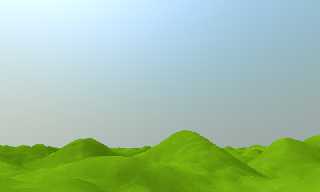|
 |
> Note that without the divisor, the sun sphere (when switched on) becomes
> invisible somehow.
It also becomes invisible to the whole radiosity algorithm... Try it
with the sphere commented out - I get exactly the same image with and
without the sphere when the /1000 divisor is deleted.
If you look at sunpos.inc near the bottom you see this line:
#declare SolarPosition=vrotate(<0,0,1000000000>,<-Al,Az,0>);
That 1000000000 is simply too big - accuracy errors prevent an object at
that distance rendering properly, even directly or from the radiosity code.
Anyway, the splotchiness is because the sun is too small, so the
radiosity algorithm doesn't always pick it up. By taking out the /1000
you are effectively removing the sun sphere from the scene so the
splotchiness goes away (along with any radiosity effect from the sun).
To test this simply make your sun sphere much bigger (and reduce the
emission so the amount of light stays constant), here I made it 50x bigger:
#local SunRadius = vlength(sp)/214.8 * 50;
sphere{ sp,SunRadius pigment{color rgb 1} finish{emission 1.6e9 * EXP /
50/50 }}
That makes it 50 times bigger and it renders fine (no bright splotches)
with your radiosity settings - see attached.
Without upping the count to silly levels I don't know how else to get an
emissive sun of a realistic size to show up with radiosity. You'd be
better off sticking with an area_light IMHO.
Post a reply to this message
Attachments:
Download 'bigsun.png' (145 KB)
Preview of image 'bigsun.png'

|
 |




![]()